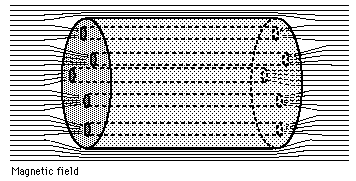The first ever black holes in a globular cluster have supposedly been found in the milky way galaxy, in two binary star systems in M22. This discredits and refutes theories about black holes, globular clusters, and even the Big-bang cosmology.
Past research simulations and beliefs stated that globular clusters cannot have multiple black holes at any one time. Most gravity theorists believed there could only be one intermediate sized black hole at the center of the globular cluster, despite the numerous amounts of stars that they contain in a spherical filamentary fractal shape. M22 contains over a half million stars, is over 50 light years in diameter, and one of the nearest globular clusters. The majority of wrong gravitational theorists believed that massive dense black holes would fall or sink towards the center of the ancient globular cluster, and gravitationally tug upon each other. They would either be ejected from the center of the globular cluster, or violently collide together in enormous explosions, that have never even been observed. The findings suggest that black hole ejections from globular cluster centers do not happen. There is also no observational evidence that any black holes ever collide in the universe.
Astronomer Jay Strader at Michigan State University says "There is supposed to be only one possible black hole survivor." "Contrary to our previous beliefs, globular clusters might be one of the best places to look for black holes, rather than one of the worst places." This shows how wrong the beliefs are about phony inferred black holes. Strader says "We estimate that a population of five to 100 black holes may exist in the globular cluster." This contradicts much of what is taught today in current cosmology, but Strader says "new future simulations will have multiple black holes inside globular clusters." I disbelieve in all of their future simulations, because the ones they had, have been proven to be wrong.
The two inferred black holes they say they found are in binary star systems, but only between 10 to 20 solar masses. Laura Chomink of Michigan State University said "we didn't find what we were looking for, but instead found something very surprising - two very small black holes. That's surprising because most theorists said there should be at most one black hole in the center." An intermediate sized black hole of over 100,000 solar masses was predicted in their theories. Extremely unpredictably different masses, and new large predicted numbers of these newly discovered radio black holes, is strong evidence to entirely disbelieve and dispute their interpretations for the existence of gravitational black holes.
Jay Strader says "all the other stellar mass black holes in our galaxy were discovered by X-ray emissions, rather than radio emissions. The black holes aren't accreting very much matter, so they don't produce hot accretion disks that glow in optical and X-rays." Only emissions from accretion disks are observed, because black holes have never been seen. Black holes are entirely theoretical, hypothetical, inferred and postulated to exist in current Big-bang theory.
Astronomer Oliver Manuel does not believe in gravitational black holes. Manuel believes there are neutron stars that behave as a superfluid at the center of galaxies. Manuel states that "you should be able to SEE A HOLE AT THE CENTER OF A GALAXY, instead of a huge outpouring of energy and light. Stars should be falling into the black hole, instead of explosively moving away from the center of galaxies." Nobel prizes in super liquid helium, and recent findings of solid hydrogen particles in the interstellar medium glow, help further develop better new superfluid electromagnetic universe cosmologies..
Globular Cluster M22
Past research simulations and beliefs stated that globular clusters cannot have multiple black holes at any one time. Most gravity theorists believed there could only be one intermediate sized black hole at the center of the globular cluster, despite the numerous amounts of stars that they contain in a spherical filamentary fractal shape. M22 contains over a half million stars, is over 50 light years in diameter, and one of the nearest globular clusters. The majority of wrong gravitational theorists believed that massive dense black holes would fall or sink towards the center of the ancient globular cluster, and gravitationally tug upon each other. They would either be ejected from the center of the globular cluster, or violently collide together in enormous explosions, that have never even been observed. The findings suggest that black hole ejections from globular cluster centers do not happen. There is also no observational evidence that any black holes ever collide in the universe.
 |
| Scientists are forced to rethink their misunderstanding of globular clusters (phys.org) |
 |
| the Nature paper by Jay Strader: Two stellar-mass black holes in the globular cluster M22." |
M22-VLA1 |
| A radio emission black hole accretion disk without the detectable X-ray jet emissions |
Jay Strader says "all the other stellar mass black holes in our galaxy were discovered by X-ray emissions, rather than radio emissions. The black holes aren't accreting very much matter, so they don't produce hot accretion disks that glow in optical and X-rays." Only emissions from accretion disks are observed, because black holes have never been seen. Black holes are entirely theoretical, hypothetical, inferred and postulated to exist in current Big-bang theory.
Astronomer Oliver Manuel does not believe in gravitational black holes. Manuel believes there are neutron stars that behave as a superfluid at the center of galaxies. Manuel states that "you should be able to SEE A HOLE AT THE CENTER OF A GALAXY, instead of a huge outpouring of energy and light. Stars should be falling into the black hole, instead of explosively moving away from the center of galaxies." Nobel prizes in super liquid helium, and recent findings of solid hydrogen particles in the interstellar medium glow, help further develop better new superfluid electromagnetic universe cosmologies..
Globular Cluster M22

Two Black Holes in Globular Cluster M22
The Electric Universe Video on the two radio sources in M22 being called "black holes" Thunderbolts story "Black Hole Surprise."












Not sure if this pretend that gravitation doesn´t exist at all or it´s overwhelmed by electromagnetism in the cosmic scales too. I personally advocate the second option.
ReplyDeleteThis is precisely the important information I'd been searching for. Incredible blog. Very inspirational! Your posts are so good and also detailed. The links you come with are also very beneficial as well. Many thanks :)
ReplyDeleteThanks for placing up this article. I'm unquestionably frustrated with struggling to research out pertinent and rational commentary on this matter. everyone now goes in the direction of the amazingly much extremes to possibly generate home their viewpoint that either: everyone else within earth is wrong, or two that everyone but them does not genuinely recognize the situation. pretty numerous many thanks for the concise, pertinent insight....
ReplyDelete